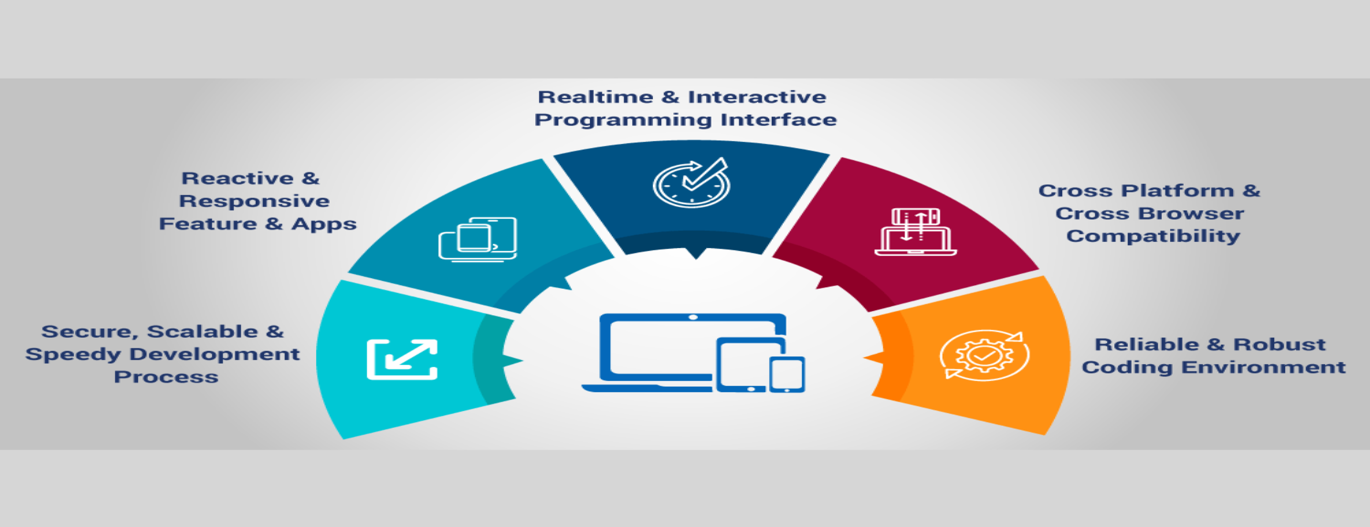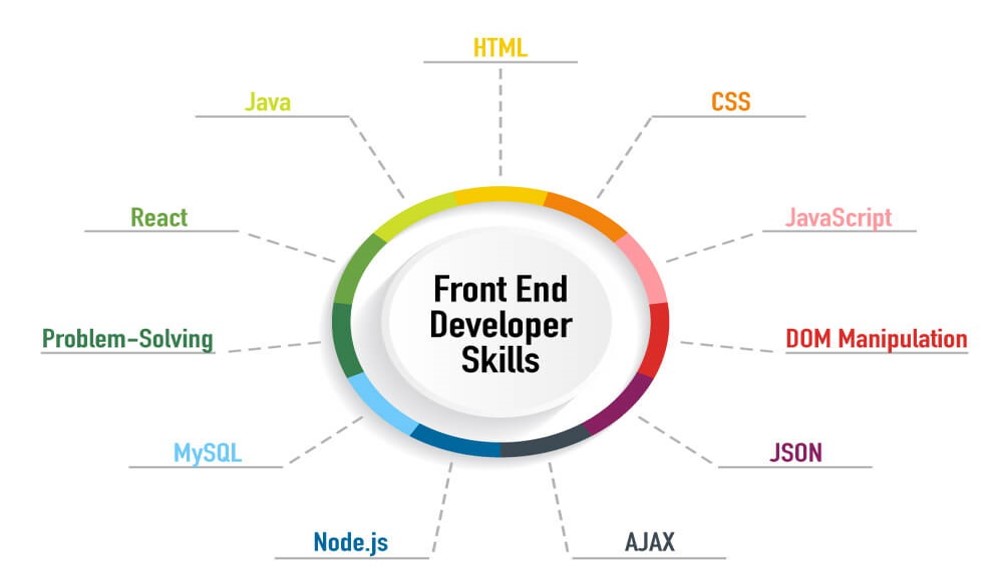
Python Front- End Technologies
Definition of Python front- end technology:
Python front-end technologies refer to a set of tools and frameworks that enable developers to create user interfaces and design the visual aspects of web applications using the Python programming language.Popular Python front-end libraries and frameworks like Flask, Django, and Tornado allow developers to build dynamic web applications by handling requests and rendering HTML templates.. These Python front-end technologies provide developers with a powerful and versatile toolkit to design visually appealing and responsive user interfaces.
Framework of Python front- end technology:
Python is not traditionally considered a primary language for frontend development, as it is more commonly used for backend development. However, there are ways to integrate Python into the frontend using different technologies and frameworks. Here are a few approaches for incorporating Python into frontend development:

Django Templates:
If you are using the Django web framework for your backend, you can utilize Django templates to generate dynamic HTML for the frontend. Django templates allow you to embed Python code within HTML files. You can pass data from the backend to the frontend and use Python logic to generate dynamic content.
Python for Data Processing:
While Python is not typically used for frontend user interface development, it is widely used for data processing and analysis. You can use Python to process and prepare data on the server-side and then send it to the frontend using technologies like JSON or REST APIs.
Brython:
Brython is a Python 3 implementation in JavaScript. It allows you to run Python code directly in the browser. You can use Brython to create interactive elements on the frontend using Python code. Keep in mind that this approach is limited in terms of performance and may not be suitable for complex frontend development.
Jupyter Widgets:
Jupyter Widgets are interactive HTML widgets for Jupyter notebooks. They enable you to create data-driven dashboards and applications with Python in a Jupyter Notebook environment. While this is not traditional web frontend development, it can be used for creating interactive data visualization interfaces.
Transpilers:
Some projects and experimental tools aim to transpile Python into JavaScript so that you can use Python for frontend development. These tools are not as widely adopted as traditional JavaScript frameworks, but they offer an alternative for Python enthusiasts who want to work on the frontend.
Career Opportunities of Python front- end technology:
1. Web Developer with Python Skills
2. Data Analyst/Scientist with Web Development Skills
3. Scientific and Research Applications
4. Jupyter Notebook Development
5. Hybrid Mobile App Development
6. Data Visualization Specialist
7. Full-Stack Developer
8. Dashboard Developer
9. Data Engineering Roles
10. GIS Developer
Advantages of using Python in Front- end development:
Python can be used with front-end development in certain situations, and here are the benefits of doing so:
Data Processing: Python is powerful for data processing, analysis, and manipulation. If your front-end application requires data visualization or complex data processing, Python can be used in the background to handle these tasks.
Single-Page Applications (SPAs): While JavaScript is the primary language for building SPAs, Python can still play a role in creating APIs, authentication systems, and backend services that support the SPA’s functionality.
Code Reusability: If you are using Python on the back end, you can reuse code or logic on the front end using tools like Brython, which transpiles Python code to JavaScript.
Web Scraping and Automation: Python is widely used for web scraping and automation. You can use Python to scrape data from websites and present it on your front-end, or to automate repetitive tasks related to front-end development.

Machine Learning and AI:If your front-end application requires machine learning or AI features, Python is an excellent choice. You can use Python libraries like TensorFlow, PyTorch, or scikit-learn to integrate these capabilities into your web application.
Backend Integration: Python is often used for server-side development, and it can seamlessly integrate with the front-end of a web application. Popular web frameworks like Django and Flask allow developers to create web applications where Python code on the server interacts with the front-end via APIs.
Cross-Platform Development: Python is versatile and can be used for cross-platform development. Tools like Kivy and BeeWare allow you to create mobile and desktop applications with a Python codebase that can share some logic with your web front-end.
Testing: Python offers a variety of testing frameworks and tools that can be used for testing your front-end code and user interfaces.
Rapid Prototyping: Python is known for its simplicity and readability, making it a great choice for rapidly prototyping front-end concepts and designs before fully implementing them with other front-end technologies.
WebAssembly: Python can be compiled to WebAssembly, allowing you to run Python code directly in the browser. This approach can be useful for specific use cases, such as client-side scripting.

Skill learn of Python front- end technology:
HTML & CSS:
Start with the basics of HTML (Hypertext Markup Language) for creating the structure of web pages.
Learn CSS (Cascading Style Sheets) for styling and layout.
JavaScript:
While Python can be used for some front-end tasks, JavaScript is the primary language for interactivity and dynamic behavior on web pages.
Learn JavaScript fundamentals, including DOM manipulation, event handling, and asynchronous programming.
AJAX (Asynchronous JavaScript and XML):
Learn how to make asynchronous requests to the server using JavaScript to update parts of a web page without requiring a full page refresh.
Data Processing with Python:
Learn how to manipulate and preprocess data using Python libraries such as NumPy and Pandas. These skills are invaluable for handling and transforming data before rendering it in your web application.
Python Web Frameworks:
For server-side development in Python, you can use web frameworks such as Django and Flask. These frameworks allow you to create web applications, manage the backend, and serve HTML templates.
Front-End Libraries:
Familiarize yourself with front-end libraries and frameworks like React, Angular, or Vue.js. These are JavaScript-based and commonly used for building interactive and single-page applications (SPAs).
Data Visualization:
Master data visualization libraries like Matplotlib, Seaborn, Plotly, or Bokeh to create interactive and informative charts and graphs for your web applications.
Testing and Debugging:
Develop skills in testing and debugging for both frontend and backend components of your web application to ensure its reliability and robustness.
Database Integration:
Learn how to interact with databases using Python. Popular choices include PostgreSQL, MySQL, and SQLite. Django and Flask provide ORM (Object-Relational Mapping) solutions for database interaction.
Version Control:Get comfortable with version control systems like Git, which are crucial for collaboration and tracking code changes.
Web Development Tools:
Familiarize yourself with development tools and debugging tools specific to web development, like browser developer consoles.
Frontend Frameworks:
Familiarize yourself with frontend frameworks like React, Angular, or Vue.js, as these are the industry standards for building interactive user interfaces. You may use Python for data processing and integration, but JavaScript is crucial for frontend development.
Course Highlights:
1- Suited for students, freshers, professionals, and corporate employees
2- Live online classes
3- 4-month program
4- Certificate of completion
5- Decision Oriented Program of Analysis
6- Live Classes by highly experienced faculties
7- Hands-on experience with real-life case studies

Conclusion
As developers seek to create seamless user experiences and responsive web applications, Python has emerged as a versatile option for frontend development.
Future of python frontend technology looks promising, as more developers are recognizing its potential and adopting it for their projects. Python’s simplicity and readability make it an ideal choice for beginners and experienced developers alike.
As the demand for user-centric web applications continues to grow, Python’s frontend technology is set to play a crucial role in shaping the future of web development.SCODEEN Global provides all updated and advanced python frontend technology courses to help you write your success story.

